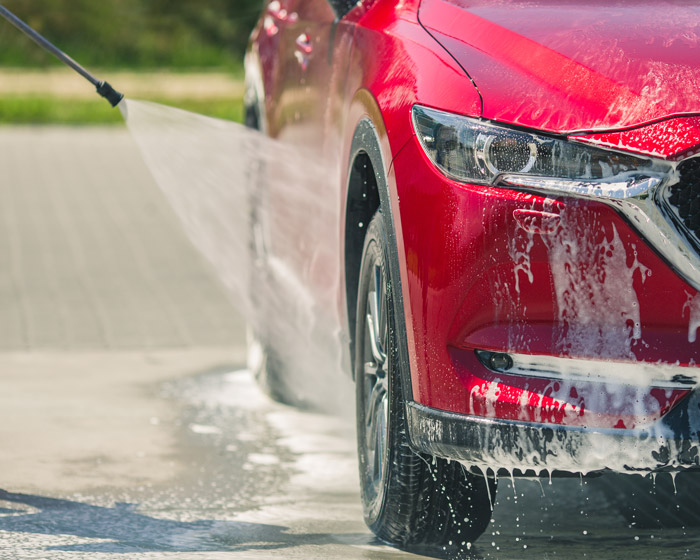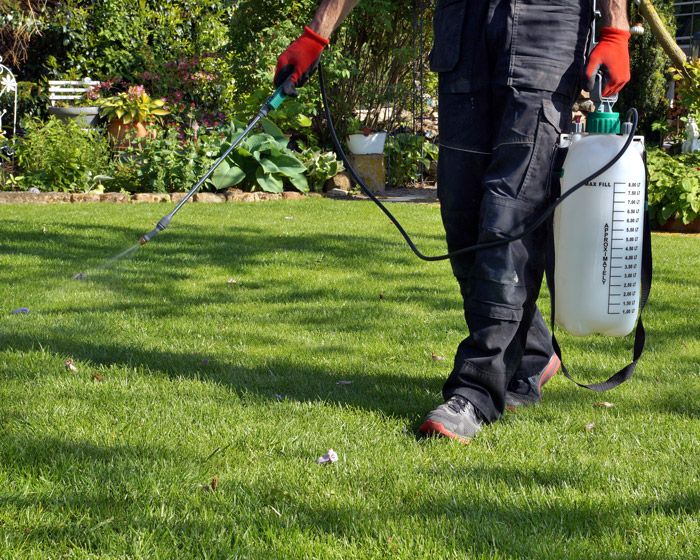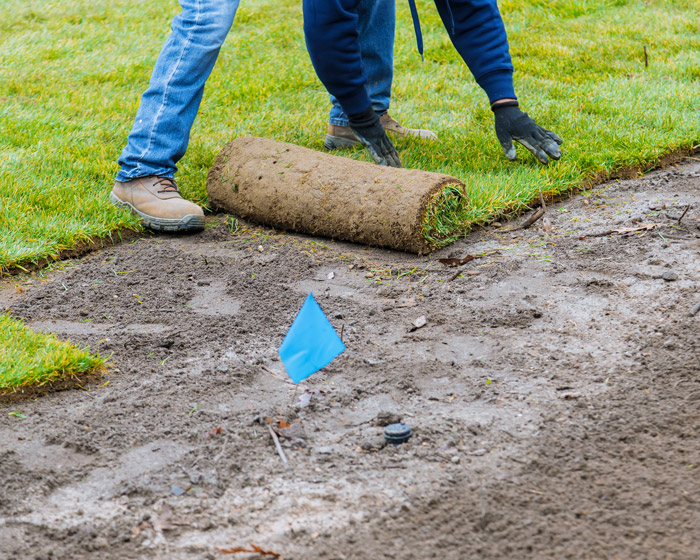Storm water is everybody’s business!
Businesses are an integral part of our community, and also have a responsibility to help prevent pollution from affecting the surrounding environment. By implementing best management practices, private businesses can prevent pollution from entering Oahu’s storm drain system. If your facility has a physical connection to the HDOT Highways storm drain system, a Connection Permit is required. If your facility is adjacent to HDOT Highways right-of-way and discharges into HDOT Highways storm drain system, a Discharge Permit may be required.
Restaurants
The Environmental Protection Agency and the State of Hawaii Department of Health have identified restaurants major sources of pollutants. Pollutants originating from leaking trash bins, wash water, food scraps, grease, and used cooking oil can enter the storm drain system where they are carried along with storm water and ultimately get discharged into our island waters. Download Storm Water Pollution Prevention – A Guide for the Restaurant and Food Industry, or browse the following best management practices to prevent storm water pollution at your restaurant.

Keep Dumpster Lids Closed
Keeping dumpster lids closed and in proper working condition ensures trash stays inside and out of storm drains.

Minimize Used Oil Exposure
Place used oil receptacles under cover to avoid exposure to rain and provide secondary containment to capture any leaks.

Quickly Respond to Spills
Get a spill kit and educate employees on proper spill response procedures. Dispose of used absorption materials properly.

Pour Wash Water in Sink
Pour wash water into a janitorial sink, which connects to the sewer system, instead of onto the parking lot or street.

Maintain Oil/Water Separators
Maintain and service oil/water separators and grease traps frequently.
Automotive Facilities
Automotive maintenance and repair activities use petroleum products and hazardous substances in fueling and vehicle servicing. Fuel dispensing areas, trash bins, air/water supply areas, repair shops, and car washes can accumulate automotive fluids, grease, trash, and other harmful water pollutants. When it rains, storm water runoff washes these contaminants into the storm drain system and out into our streams and ocean. Download Storm Water Pollution Prevention – A Guide for Retail Gas Stations and Auto Maintenance Facilities, or browse the following best management practices to prevent storm water pollution at your automotive facility.

Plan Your Site
Designate an area away from storm drain inlets for replacing motor oil, coolant, and other fluids. Do not pour liquid waste into floor drains, sinks, outdoor drains, or sewer connections.

Keep Dumpster Lids Closed
Keeping dumpster lids closed and in proper working condition ensures trash stays inside and out of storm drains.

Minimize Used Oil Exposure
Place used oil receptacles under cover to avoid exposure to rain and provide secondary containment to capture any leaks.

Properly Respond to Spills
Obtain a spill kit and educate employees on proper spill response procedures. Dispose of used absorption materials properly.

Properly Store Hazardous Materials
Clearly label and securely store hazardous materials. Cover products and stockpiled materials from the rain or store indoors.

Contain Vehicle Wash Water
Contain vehicle wash water onsite and away from storm drains.
Landscapers
Landscape practices are a major source of nutrient pollutants, mainly nitrogen and phosphorus. While they are needed by all plants for healthy growth, excess nutrients fuel algal blooms and can promote harmful algae. When an algal bloom collapses and decomposes, the process takes oxygen out of the water resulting in low oxygen conditions. Here are some best management practices to prevent storm water pollution from your landscape practices.

Use Pesticides, Herbicides, and Fertilizers Only As Needed
This will save you money and help reduce the chances of rain washing it down the storm drain. Use spot spray rather than broadcasting or using a spray truck, where feasible.

Utilize Best Management Practices
Do not spray pesticides, herbicides, or fertilizers in or around drainage structures. Never apply pesticides, herbicides, or fertilizers before a forecasted rain event and avoid spraying during high winds (over 8 miles per hour).

Maintain Your Equipment
Always read the product information for your equipment and ensure it’s working properly. If a spray application is required, make sure mixing occurs away from storm drains and that the sprayer is appropriately calibrated.

Clear All Landscaped Areas
Keep all gutters, swales, and ditches free of litter, rubbish, and debris.

Stabilize Eroding Areas
Stabilize and replant any eroding areas immediately.
Other Tips
All facilities have the potential to contribute pollutants to our drainage system. By following these general practices, we become stewards of the community and the environment.

Reduce Impervious Surfaces
Impervious surfaces such as concrete driveways, parking lots, and roads do not allow storm water to infiltrate into the ground. Instead, rains flow into gutters that lead to the nearest storm drain. To prevent storm water runoff from your property, replace paved surfaces with a porous alternative or install a vegetated buffer, which captures and filters pollutants. Additionally, you can use a rain barrel or a cistern to capture and prevent storm water.

Sweep Up Litter
Regular sweeping of nonporous surfaces, especially around storm drains, helps prevent storm water pollution. Never hose down driveways, sidewalks, etc. with water because it will transport any pollutants along its path into the nearest storm drain.

Use & Maintain Landscaping to Prevent Soil Erosion
Vegetation, such as trees and shrubs, not only provides aesthetic value and shade, it also helps prevent soil erosion and pollutants from entering a storm drain inlet. Native trees, shrubs and plants should be used because they tend to have strong root systems and will not choke out other plant species.

Use & Dispose of Chemical Products Properly
Properly dispose of any chemical, such as gasoline, paint, motor oil, fertilizer, pesticides or any other potentially hazardous chemical. Don’t pour harmful liquids into a storm drain; they pose a great threat to marine life and recreational activities near the discharged area.

Get involved
Participate in community events to prevent storm water pollution. Activities may include stream or beach cleanups, or educational events where you can help inform the public on the potential threats and implications of storm water pollution.

